Matchbox Monday dives back into the past II

The feedback from my last blog report, where I simply did a dive back into the collection, was wholly positive. Nobody complained about it. So, as it has been a long weekend for many, celebrating Easter with plenty of chocolate, or booze (depending on how you were celebrating), I thought I would give us another classic retro looking blog report. I decided to go with a pair of Mercedes-Benz models, and a pair of Ford models for this dive back. I will continue to sprinkle odd one in over the months. So, feel free to leave me a note if there are any models you want me to attempt. One of the 4 listed here was at the request of somebody. I will get to that one in a moment, but first....

I will begin with the classic MB6-B Mercedes-Benz 350SL. Coming off the success of their first Mercedes-Benz convertible, the W113 series (which they marketed as 230SL), which ran from 1966 through 1972, and is coming back this year as a new casting, Lesney decided to replace the model in the basic range with the newer R107 replacement, that Mercedes-Benz had launched in 1971. There was a brief gap in 1973 while they were transitioning, and in 1974, the new 350SL was launched. To be a bit different, they decided to market the model with the soft top in the raised position. Something that is not often seen. Usually a convertible will have the top down. To do this, they simply had a tab at the top end of the window section, which the roof would rivet into, before being slotted in at the back of the model. I remember owning a few of these as a child. The 2 slots in the rear that the roof went into were very easy to pop up, and then you ended up ripping the roof off. And with it, the window often came with it. I was a destructive child, and I don't think I was the only one. I have often seen playworn examples with no window or roof for sale. As an adult collector, I made sure to find examples with the roof intact.

The model arrived in orange, and this ran for the first 2 years, through 1975. As was always the case with Lesney, paint was whatever they got for the cheapest money, and batches often changed their shades. Some came out quite a lot lighter than others.

Early models sported a clear window section, but they soon added an amber window as an alternative. During these 2 years, you could find either during production. It wasn't a simple switch. We know this, because the early 1974 runs had a patent number cast into the rear section of the base behind the wheels. By 1975, this had been rubbed off, and both clear and amber windows are found with either base.

Therefore, an amber window will also be found with a variety of shades to the orange.

At the end of 1975, Lesney created a new selection of wheel types. The dot-dash, 5-crown and 5-arch wheels were launched circa late 1975/early 1976 on models, and the Merc saw the 5-arch switched in for the older 5-spoke. These appeared briefly before the model was changed from its debut look.

Because, as 1976 rolled in, the model changed to yellow. At first, these were quite a dark shade. It was almost like they just went with a lighter and lighter shade of orange until it drifted into the yellow spectrum.

By now, the use of amber windows was much more prevalent. Over the course of the next 4 years, the shade just kept getting lighter and lighter.

However, if you do hunt around enough, you will find a yellow bodied, clear window example. They are not easy to come by, though.

During 1977, Lesney decided to attempt some country exclusives. Germany was a big market for them, and they came up with a small selection of models that sported unique looks for the German market. This only ran for the 1 year. In 1978, they reverted to the regular worldwide look again. The Merc was given a special silver outing, and some Rennservice labels added, as well as a chequered flag on the front and an AvD label on the rear, for the Automobilclub von Deutschland. However, quite a few were to be found without the labels applied. They are a legitimate variation, and not just a case of labels being peeled off. As noted, amber windows were the norm during this period, and I have not heard of any silvers coming with anything but an amber window.

In 1979, they decided to refresh the look of the model. Out went the solid yellow paint, and in came a metallic bronze finish. At first, the amber windows and the black roof were still being used. They had a lot of these in stock.

These ran for quite a few months, so obviously the shade of bronze can differ between production runs.

As 1979 progressed, the stock of black roof elements ran dry, and they switched it to a white roof. There were still amber windows in stock to be used up.

As they ran out, they switched back to a clear window, but also trialled something a little different. Smoke.

Over the rest of 1979 and through 1980, they continued with the bronze with white roof, and usually a clear window. Again, shades of bronze were all over the place. There is supposedly an ivory interior run that popped up at one point. I have never seen an ivory interior myself. I only ever find light yellow ones. But, keep an eye out. You might luck out and find a rare ivory interior.

In 1981, they made a further change, by switching the model to a solid red look. Again, parts used on the older bronze model were simply transferred over. It was only a change of paint.

However, while the interior and roof never changed again, the window did sport an amber look for some production runs. No smoke windows. That was only a short time in late 1979.

Cherry red? Orangey red? Yes, just as with all other releases to date, the shade would vary a lot over the course of the year.

After 1981, the casting underwent some serious plastic surgery. For 1982, the roof was taken away, and it was back to being a full-blown convertible again. To do this, the interior was modified to include a tonneau cover section to the rear of it. The body section was altered to remove the slots that the roof went into. Even the window section was altered, as there was no longer a need for a tab to insert the roof element into.

For the first time, the shade of paint remained fairly consistent. Only subtle changes to the blue could be found. These are more of a nuance than a proper shade. However, another first was the decision to start painting the base. After some early runs with unpainted bases, the rest of the year saw the model sport a silver base.

However, there are a few other small things to look for. An early run forgot to paint the silver strip down the side (it came on an unpainted base, and I am yet to find one), but what I did find was a late 1982 production run, where they ran out of 5-arch wheels, and substituted some Maltese cross wheels in their place. However, daft fact, the Maltese cross wheel is a little larger in diameter than a 5-arch wheel, and as such, it barely fits in the wheel arch, and the model doesn't roll that well. Being a late run, they only exist on a silver base.

After 1982, the model was dropped from the US range. However, it carried on, exclusive to the ROW market. For this year, it was changed to a plum look, and they went a little more nuts with the bases. It could be found with unpainted, silver, or now black. There is a known variant (or 2) as both unpainted or black base examples have been found with dot-dash wheels. Again, I have not found either of these. There has been no reported finding of a silver base with dot-dash wheel. So, I am still on the hunt for random extra model. Plus....

Being an ROW exclusive in 1983 meant that production was not sent to Macau. England manufacturing continued until the start of 1987 for various items, as it took many years to wind it down. In 1983, anything that was exclusive to the ROW market (and Convoy) continued production in England. Convoys moved in 1984, and ROW exclusives started moving in 1985. A few models continued into 1986, and Super GT production was done in England. As they finished off, and the factory closed down for good, they finished off with a special Direct Line telephone (which I don't own as it was not a miniature sized vehicle, missed opportunity). When they stopped production, it was actually in 1984, as after the ROW market dropped it at the end of 1983, it rolled along in 1984 as a Japanese exclusive, and was in the number 1 slot in the 1984 Japanese 1-100 series, but was dropped after 1984 there as well.

But this was not the end of things for this model. In days gone by, various countries had very strict laws regarding inports of goods. One of these was Brazil. To get around this, Lesney had set up a deal with a company in the 1970s for local production. Shipping of parts was allowed, but complete models were not. So, they sent over the tooling for various models, and they were put together by a local Brazilian company. This had stopped before Lesney went bust. Universal set up a new deal with a local company called Trol in the mid 1980s. Various tools were sent over for local production. In 1987 (or thereabouts, as details of Brazilian stuff is not easy to verify), the Mercedes-Benz 350SL was sent over. They made a plain red model for circa 4 years. However, over time, we have discovered some more details. An early run existed in a pale grey and then in beige. And some later ones came out in brown and a late run in blue. These are extremely elusive. However, I have managed to secure one of the red ones. This sports the 8-spoke wheel that was also sent over. However, the factory also created their own 4-arch wheel, and the model can be found with those as well. As to the 4 rare colours, all were known only to exist with 4-arch. But, we could find out that 8-dots exist. They are few and far between.

To keep the weight down, many of the castings that were sent over, had their bases changed to plastic. These were cast initially by Matchbox before being sent, and then simply run off in Manaus.

As production was finishing in Brazil, they released a few unique 4-packs of models. One of the packs, circa 1990, featured the Mercedes-Benz in black as one of the 4 models with a simple side design.

But, Brazil was not the only country with import sanctions at the time, and Bulgaria had been doing some local Matchbox production a few times already. A deal had been set up in 1983 for a set of models to be sent over, but the castings had to be returned after a year. The factory went nuts making as much as they could. Another deal in 1985 was made, and again, they went crazy. Another one in 1986, and after these 3 deals, they came up with a new deal for 1988. The castings could stay. They didn't have to rush quite so much with these new castings, and after 3 years, they sent over another set of old castings. Again, the factory in Bulgaria kept these tools. One of them was the Merc. But, before it was sent over, for some reason, the Matchbox team switched out the Matchbox Superfast logo for a Dinky logo. And they placed a tab over the England word with a new Bulgaria name, before sending the metal base section (along with the rest) over.

With no time limit, they spent a few years coming out with a whole variety of different colours for the model. A common thread for the model was that each one had a black interior and clear window. Wheels were always 5-arch, and as a rule, the base would be black. A few earlier plain models would see silver bases (I don't have any early ones with a silver base).

Circa 1995 (again, exact details are not 100% clear, as things were not exactly detailed as they were happening), they started adding tampo details and coming up with alternate base colours. Often silver. These 3 are from 2004, when they joined in with the 35th Anniversary Superfast celebrations. The castings are still there, and new runs appear sporadically.

Now, although that seemed like the end of that model, there is one small addendum to finish with. Also, a 1991 release, as well as sending over an example to Bulgaria, they also sent another example over to the new factory in China to work as a test model. This was one of a number of older castings that were no longer being used (as well as a couple that actually were still in production - Pontiac Firebird SE and Tyrone Malone Super Boss). The Merc was run in a plain white with a red interior. These were then placed in 6-packs for the US market (under the name Super Value Pack), as well as smaller 3-packs sold in the ROW market.

This saw the base completely re-worded, and a 1:58 scale added as well.

That was it for this casting. It is quite unusual as it had 4 countries of manufacture. Not unusual in itself, but being England, Brazil, Bulgaria and China is. Plus, for each change of country, they overhauled the base detailing. No simple addition of a tab as is often the case.

Back in 1983, Matchbox had just been saved from the scrapheap by Universal, after Lesney went bust in 1982. Due to the temporary uncertainty, work on new tooling was pretty much stopped. As such, when 1983 came around, there were precious few new tools being prepared. 3 that were supposed to have debuted in 1982 were finally ready. The MB076-MB078 models were supposed to have been upgrades to some Japanese tools that were deemed too poor. But, with all 3 having issues, none arrived until 1983. That was quite lucky, as it helped to bolster a very lean selection of new models. The official 1983 section of MAN numbers runs from MB116 through MB126. That's 11 models. Out of these, 1 was simply an alternate to an existing (MB126 = MB086), and 6 were hurriedly created by altering existing castings into something a little different to give the illusion of something new. That meant they only had 4 actual new toolings in place for the 1983 model year. A Citroën 15CV, Mercedes-Benz Unimog w/plow, a 1983 Chevy Corvette (later altered to 1984) and this, the MB120 Ford Sierra XR4i. The real vehicle had launched in late 1982, and Matchbox were right there, making a casting of the sportiest version of it. The real Sierra had replaced the Ford Cortina, so this was deemed to simply do the same in the basic range. As such, the casting actually had MB55 cast into the base. This was because the original plan was to launch this as an ROW exclusive. However, at the last minute, they decided to throw it in t US range in the MB15 slot, which made it a little confusing. As I said, 4 new tools, and only 1 of them was being sold in the US market? They felt it needed a little more. The very first production run sported a white interior. These are almost impossible to find, and I have never seen one. It swiftly switched to a red interior, and at first, they decided to tampo print the B-pillar in black.

They quickly made a decision that this was irrelevant. So they knocked it off.

This is a funny little part. The original run with the white interior sported a grey spoiler on the back, but it was changed to white for regular production. However, they decided that perhaps the grey spoiler would stand out more, so switched it back. Grey spoilers tend to be a little more common than white.

As this was originally planned to be an ROW exclusive, production took place in England. For 1984, they changed the look of the model to silver with an XR4i tampo design on it. However, it still carried on in England. Even though it was also being sold in the US market. It is a bit of an anomaly vehicle in that respect. Apart from a small fact of removing the MB55 detail to the base, which actually happened shortly after the silver started production (so if you wanted a rare base variant, finding silver with MB55 is a tougher hunt) But, what I did notice, as is often the case, the shade of silver did vary.

However, as they moved a bunch of tooling over to Macau for the 1985 model year, this eventually ended up in Macau. There is a really easy way to distinguish between England and Macau production on this model.

The windows. If it is made in England, these are clear. If it is made in Macau, they are amber. With roughly a year of production in each country, the chances are, you will easily be able to find both countries. However, shades are a lot of fun. As I noted with England made models, you can find a shade.

But, with Macau models, it is not just the grey paint that can vary. The tampo print can come in a bright red, going all the way to a dark marooon colour.

And Macau made models even came with a wheel variation. England always has 8-dot, but Macau can be found with dot-dash wheels as well.

And, if you are really lucky, you might find an error. Did somebody not fancy adding the tampo that day on this one?

In 1986, they came up with a whole new design for the model. It was now in yellow, with the newer XR4x4 logo added. Even though the base still said XR4i. This look lasted for 3 years, although the last of those was as an ROW exclusive. The US market dropped it after the 1987 model year. Early runs still had parts from the silver model. A red interior, amber window and even the dot-dash wheel were still in action as it rolled in.

1986 was such a fun year for variations, as the wheels were flipping around, and gold 8-dot wheels kept popping up. These are on the red interior, amber window, grey spoiler variant.

As it continued through the year, parts were being altered to the new look. A black spoiler and black bumpers were the early changes.

Then the interior turned black, finally the windows turning clear. Phew! I am still missing some of the variants. It has a lot. Gold wheels on a later run? Still looking. Chrome 8-dots on the early run? Still looking. Plus, if you were to check closely, they had a casting that had no sunroof etched into it. It was used alongside the one with a sunroof etched in. Plus, the model started getting axle braces in early 1986 because of a certain model, which means that you might find some early yellows with no axle braces.

By 1987, all the madness had stopped, and the final few years of yellow were quite consistent. Any variation will be a 1986 model. The last oddity was a gold wheel when it had fully transitioned into yellow.

The reason for axle braces was the debut of the new Superfast series. This ran from 1986 through 1990, mainly in the USA. This ran for 5 years, and basically ran in the same look the entire time. I currently have 2, both sporting an amber window, but this is known to come with clear as well. I just haven't found one yet. You might notice the tampo on these 2 is a little different in shades. There is supposedly a variant without 85 on the front. I have not seen one.

Of course, Superfast span-off into Laser Wheels as well, in 1987. SF-7 became LW-7, and the black became a metallic green, with the tampo being in a different set of colours (along with the different wheels). This also ran unchanged until 1990. However, again, amber or clear windows exist, and I am still looking for clear. For those who like base variations, at the end of production, circa late 1989, early 1990, Macau production cost reduced the base to a plastic one. I have not pursued those variants. This is on both the Superfast and Laser Wheel model.

In late 1986, Matchbox were negotiating a promotion with BP in the UK. There was going to be a set of 12 models as part of the promotion. A small group of pre-production samples were created to show off to the BP reps. Many were alternate colours to basic range models, with some tampo removed and a BP logo added. All appeared to be running smoothly, and as such, with a tiny timescale to work with, before it was finalized, they actually started production on the first 6. The Sierra was one of those. However, BP pulled out at the last second, meaning that thousands of 6 different models had been made with a BP logo. So as not to waste them, they simply over-tampoed the BP logo.

5 of the models, this being one of them, were simply thrown in some side lines. Around that time, they were often selling random extra stuff, with models simply pulled from the basic range included. Launchers were one of the best known examples, as these 2 plastic launcher items were sold in a blister with 2 random models. They turned up in the USA, and these 5 were added in one of the spaces. An easy way to get rid of them. A final model, the BMW 323i Cabriolet in white, was randomly inserted in ROW window boxes in place of the regular red model.

1986 saw quite a bit of action for the model. A Team Convoy set was released with a Duckhams livery, and this was the race car on the back of the Kenworth Transporter. A Ford Supervan was added as an extra in an identical look. It ran until 1989, and apart from a change of designation from TM-6 into TC-9 during production, it was noticed that the final production in 1989 did also sport the cost reduced plastic base.

And a Virgin Atlantic gift set was also sold. The G-6 set was only around for the 1 year at the time. This has been noted as coming with either a clear or amber window. I have not found both.

In 1988, work was underway with planning a change to the basic range model. Yellow had been going a few years, but they wanted a refresh. This is a pre-production sample of what they were looking for. You might be able to tell this donor vehicle was an England base silver from 1984, which was likely hanging around the R&D Centre, which was still based in the UK. That wasn't closed until after Tyco took over, and transferred it to Mount Laurel, in New Jersey, circa late 1994.

This model started off as an ROW exclusive, as the US range had dropped the model after 1987, but in 1990, it returned to the US range as MB40. They saw the black look with a Macau base, and...

The cost reduction to a plastic base. However, after 1990, the model was again dropped from the US range, and returned to its status as an ROW exclusive for the 1991 model year.

With the Macau factory closing after 1990, production moved to Thailand for the 1991 model year, and this only appeared on ROW cards.

1989 also saw the release of another Team Convoy set. The Tizer team also had a Sierra on the back of the Kenworth Transporter, and with production running through 1990, also is known to sport either a metal or plastic Macau base.

In 1990, Matchbox launched a new series known as Lasertronics (known by other names in some countries). Models sported an internal assembly with a battery, that when depressed, the lights would sound and a siren could be heard. As such, there was no standard interior, and the windows were black. Holes were cut in the roof to accommodate 2 small LEDs. 3 models were released of the Sierra, with a sheriff, fire department or....

An airport security design. As you can see on this one, the LEDs popping out were either red or green. The fire model is also known to vary a little from amber to the yellowy green, but is not as noticeable, and I have to obtain the alternate. The sheriff one only has the one light.

In 1991, the Sierra joined the My First Matchbox series. Being a late addition, this meant it only came with a Thailand production and unpainted wheel hubs.

Oh, I almost forgot. The Virgin Atlantic model was back. But not as a G-6 multipack model. It returned in late 1990 as a Skybusters themed set, with only 2 models joining the plane. This was with a plastic Macau base, and then in 1992, the model was randomly thrown in the ROW basic range with a Thailand base.

With another random ROW find in 1993, but now with a red interior. I am saying random, because these were not the official ROW MB55s in 1992/93.

The official 1992-93 ROW exclusive was this white racing look, with a nod to Nigel Cooper, a Matchbox collector and former Ambassador of the company. The only other British person (aside from myself) that was an Ambassador. Out of the 11 Ambassadors, 7 were from the USA, Nigel and I were the 2 Brits, and we had 1 German and 1 Dutch. During those 2 years of production, you can find variations to the blue tampo.

After 1993, the model was dropped from the ROW range, and all side lines were non-existent as well. Until 1996. Under Tyco's ownership, they thought it would be cool to re-launch the Lasertronics series. Except now, it came with a much more logical name. Light and Sound. After all, that was what these models did. Flashed lights and made a sound. They simply used the castings that had already been created for the 1990 series, so the Sierra returned. It sported 2 looks. One was a police look, fairly similar to the one from 1990.

This ran for 3 year, and for 1998, under Mattel's ownership, it was given a small refresh to change to a blue tampo.

The other look (it only had 2 looks this time, not 3 like in 1990), was a taxi themed model. I have just discovered that I missed getting one. It started off in yellow. For 1998, it turned white. Okay, off to hunt for a yellow taxi. And with that bombshell, I am done with this model. Next up, the replacement.

Daft, pointless, fact. I owned a Ford Sierra when I was younger. I then traded it in for the replacement, the Mondeo. Then a second, and a third, before downsizing for Ford Focuses (and now a Puma). So, when Matchbox debuted the MB272 Ford Mondeo in the 1995 basic range, I was extremely happy. I had one sitting outside my house. It was awesome! Sadly, this did not last very long. For the 1995 debut, either as MB40 in the US range, or MB33 in the ROW range, even though this was a Ford Mondeo Ghia (the luxurious version of the car), they gave it a rally look. Mondeos were not really known in the USA. It was being sold there as a Ford Contour, or Mercury Mystique (with a slightly different grille), and Ghia was only used on European/UK sales.

This look was based on one used by the factory Ford team in the British Touring Car Championships in 1993/1994. The number 15 was driven by Paul Radisich, who ended up 3rd overall in the 1993 season. The 1995 debut was technically correct, as he drove the number 15 with the Mondeo writing sporting a yellow edge on the white background. However, getting that all lined up perfectly was not the easiest, so for 1996, they tweaked the design fractionally, so that the Mondeo was a simple red piece of tampo, and with it, the number 15 logo was slightly altered. For those who are really into bases, both of these are known to sport a scale on some bases and not others. They were using 2 base parts during production and one omitted the scale for the model.

After 1996, 2 things happened. The US range dropped the model, and the factory stopped using the base section that had omitted the 1:59 scale marker. For 1997, it was now an ROW exclusive MB33. It still came in the exact same blue, and even featured the same interior. However, there were no racing markings. In place was a simple white headlight and Ford badge on the front. That was it. Very simple. Sadly, after this, the model was also dropped from the ROW range. A very short life. However, there was 1 more outing. Or should that be 2?

This is because, in 1998, the model was added to the Real Talking Airport playset. This large set had this as an exclusive at the time. It came in white with an Airport Security theme. It was a large set, but, for those who were unwilling to fork out so much for the exclusive model, in 1999, they decided to add it to an Airport Adventure Pack, along with a Scissors Truck and some additional items (the Hitch & Haul of that time). The Scissors Truck was unique to the set, but this was simply the playset model again. However, for those who like their base variations, if it came in the Airport playset, it had no batch date on the base. If it came in the adventure pack, it did have a batch date on the base. After this, the model was retired. Yes, it only had 4 outings in total, although 7 variations if you are a base fan. I was sad to see it go.

Well, as I did 2 Fords that were connected, I thought i would finish off this dive back with another Merc convertible. The MB400 Mercedes-Benz CLK Convertible was launched in the 1999 basic range. But, only in Germany! It launched in the MB71 slot as one of many exclusive new castings that debuted in the German range. Mattel had decided that the German range needed some exclusive content, although for 2000/2001, decided to change to a German, Australia and UK exclusives. They were the 3 biggest markets outside the US at the time, and all other markets saw further exclusives. Well, they would, except one batch was missed. However, 1999 was an amazing year in general, and this Merc, the C208, was launched in a lovely dark metallic green with a black interior.

However, it was not an exclusive for long. This is because it was in the first batch of the 2000 worldwide range. It was MB1 for the year, and even kept the same green look. However, as a worldwide release, it now sported a tan interior.

Plus, if you lived in the USA, you night have found a logo model. The first 10,000 produced for the USA market sported a Matchbox 2000 logo on the top of the window.

However, this was almost it for the basic range. The US range dropped it after the 1 year. However, it continued for 1 more year as an ROW exclusive in gold. I did find a small shade to the gold on my travels.

For 2002, the casting only saw 1 outing. It was a part of the first Stars of Germany series, exclusive to the German market again. This did mean that, if you lived in Germany, this would be year 4 seeing it. Everywhere else, 1 or 2. It came in a very simple blue look with no tampo printing at all. However, if you are really lucky (I am not), you might actually own a limited edition 1 of 40 release of a Michael Fischer-Art model. He was given 40 unpainted examples of each of the 12 Stars of Germany models, and he applied a hand painted art design to each one. All 40 are different. You could technically have 41 (including the standard Stars of Germany), but I doubt those who have the sets are willing to part.

In 2003, it was given a worldwide release. For that, it looked like this. It was a part of a really cool sounding Convertibles 5-pack. However, every convertible in the pack had a sports theme to the side. Well, this was the full-blown Hero City era. 5-packs were coming out with some quite unique looks. This being a tennis theme.

For 2004, it was put back in the ROW basic range. It was in the MB20 slot, as Matchbox had launched Ultra Heroes that year. The first 30 slots in the US range were handed over to these creations, but the ROW market only saw 15 of them. The other 15 slots were given over to some really cool exclusive models. However, again, this was a very plain look, and the front grille wasn't even chromed. And yes, the window is almost black.

But, we also saw a couple of really nice releases as well. Matchbox had re-launched Superfast to celebrate the 35th Anniversary of the range, and the Merc was given the SF-67 slot in a lovely burgundy colour. It was also given another German exclusive outing, in what was now being referred to as Stars of Cars (for 2004, they decided they didn't all have to be German vehicles, so switched the "Germany" part for "Cars"). This was again in blue, like the 2002, but this time it did get a little detailing.

The model was also a part of the Around the World series. A sideline that was being sold in the USA, where models came with a tiny camera and a sticker in the pack. This was in the number 5 slot, advertising the Leaning Tower of Pisa.

In 2005, the model was given a final outing. It was back in the basic range as well. It was in the MB62 slot and came in chocolate. I say that, as I am eating chocolate while writing. What? It's Easter! Chocolate heaven! This would prove to be a swansong for the model, as 2005 had also launched a brand new Merc convertible casting (the MB675 Mercedes-Benz SL55 AMG), and so this was retired after this final look. However, it went out with a bang.

This is because early runs sported red rear lights, but shortly after, they turned them orange.

Both of these have the same base. Why do i mention this?

That's because 2005 was a transitional factory year. This is one of the models that first started with production in China, but later on was sent to the Thailand factory to finish.

Thailand models were a lighter chocolate, but they also sported the orange rear lights. However, just like the Sierra when it switched from England to Macau, there is an east way to tell China and Thailand production.

Wheels. Actually, this is not technically correct, as the first Thai made models actually saw the flower wheels, but quickly changed them to lace wheels. And on that "wheel-y" awful note, I think I am done. I hope you enjoyed my latest dive back.

A rundown of 2 classic Mercedes-Benz convertibles from either Lesney or Mattel.

And sandwiched in between, a pair of family cars from Ford. One from Universal, the other from Tyco.

Next week will be back to the current stuff. I have "collected" quite a lot of new items (hinting my next report) which I am preparing to showcase. I hope you have a little nostalgic fun with these. Until next time, have a safe and happy week.


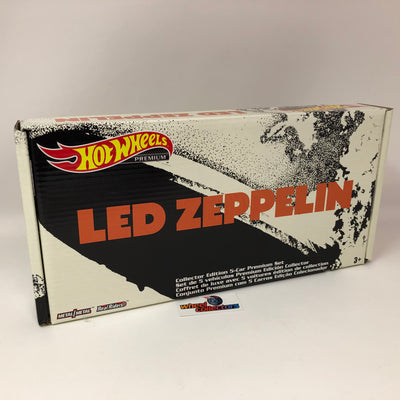
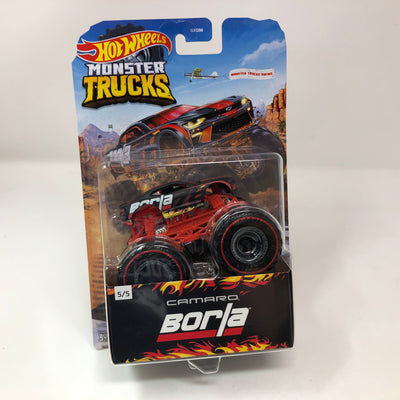
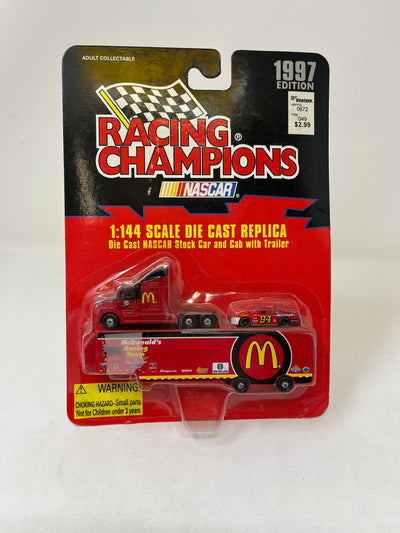
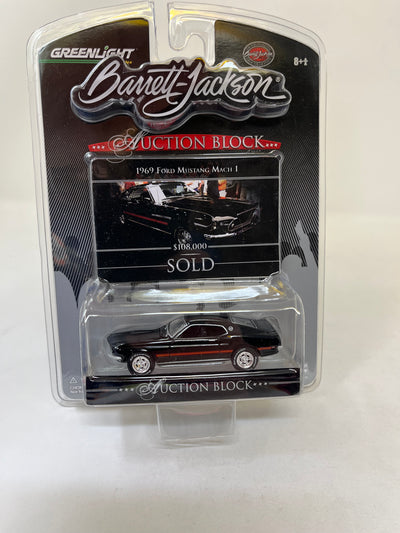
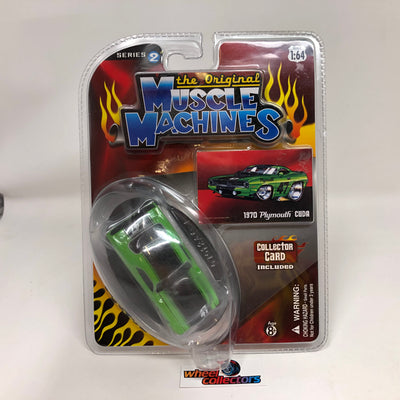
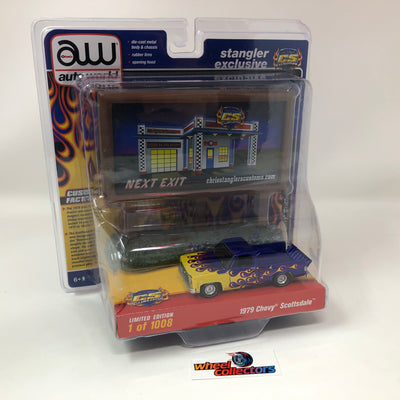
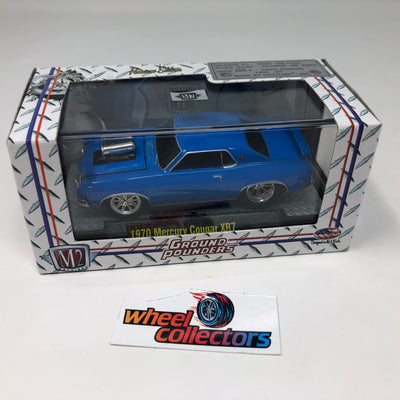
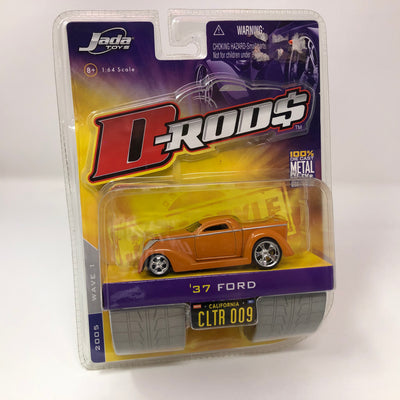
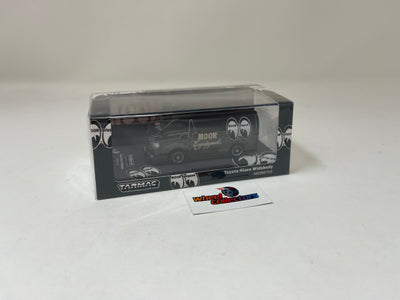
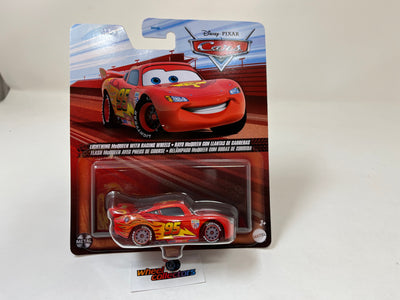


Leave a comment